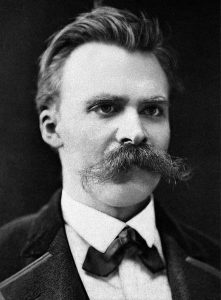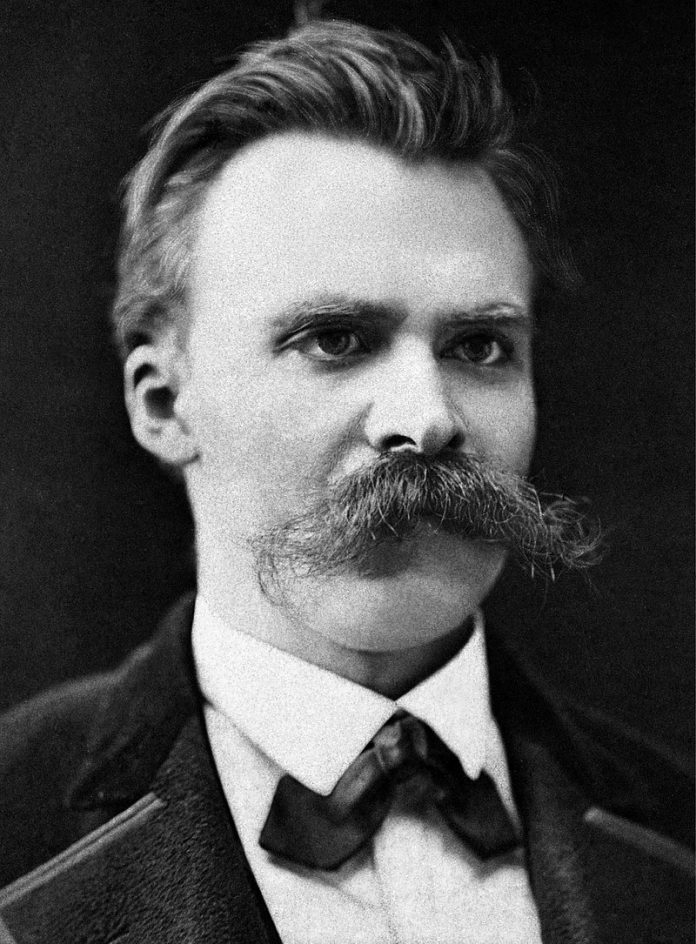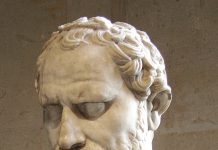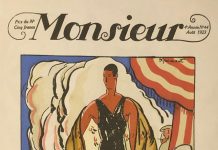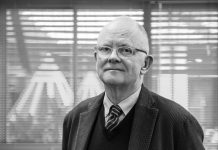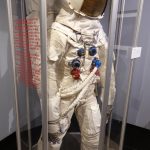I say that William Shakespeare was the first and last man in history to be right about everything on which he spoke; however, I say that Friedrich Nietzsche (1844-1900) was the first and last man in history to be both right and wrong about everything on which he spoke. I rather imagine Nietzsche’s philosophy to be a field, where half of the field is filled with buried mines, and half of the field is filled with buried gold. At times it seems that the mines and the gold are buried together. Jeremy Fortier, who is a postdoctoral Fellow at the City College of New York and author of The Challenge of Nietzsche, would call this aspect of Nietzsche his “artful tension” (I name it a ‘creative tension’, but since this is Dr. Fortier’s book under discussion, the term “artful tension” will be used). His examination of Nietzsche is not necessarily as a philosopher, but rather as a man who used philosophy to understand himself and to fashion himself. Fortier’s study on the formation of Nietzsche follows an archetype of Nietzsche’s own creation (which archetype he created over different times): in order to achieve oneself, one first imitates when a child, then breaks with the childhood idol in the great thirst for “myself”, and then one enters into a period of quest for self-knowledge and finding one’s “task” and forever thereafter suffers different levels of illness to achieve different levels of health.
Richard Wagner, Composer-great, was Nietzsche’s childhood idol (an idolizing I am inclined to believe was one of those buried mines). Now Nietzsche wrote several books upon Wagner which were praise-filled early in his career and critical in his later career. It seems that for the infant years of his career, Nietzsche had come to embrace the Wagnerian project. Wagner believed his project was to give life anew to the world through music-poetry (his operas) and the creation of “a new, quasi-religious mythology that would. . . .shape human existence”. Nietzsche’s entrance into philosophic puberty, or the inception of his essential and permanent change culminated in 1876. “By the time of Bayreuth, Nietzsche’s private sympathies had already begun to shift in the direction of science and Enlightenment; being confronted with the full spectacle of Wagner’s attempt to construct a new Romantic mythology repulsed him.” Bayreuth was a music festival organized by Wagner to honor Wagner and propagate Wagner, which was a very Wagnerian thing to do. Nietzsche’s rejecting of Bayreuth was forever present in his life thereafter in the form of his eternal rejection of Romantic mythology and neo-Romanticism. Nietzsche wanted a declaration of independence from Wagner, so he wrote Human, All Too Human, which he established as a philosophy for “Free Spirits”, perhaps because he considered that he had just become a Free Spirit with his abandonment of Wagner. The Free Spirit though was more than a philosophical character; he was the first archetype creation which Nietzsche gave birth to in order to understand himself and his evolution (a recognition which Nietzsche would write upon much later and primarily in his autobiographical literatures). The Free Spirit was an individual who set himself against the existing world in a critical manner, one who sought solitude and near-absolute self-reliance (I would say that the Free Spirit was a little gold and a little mine at once). Human, All Too Human adhered in essence to Nietzsche’s new-found allegiance to Enlightenment.
Nietzsche theorizes that there should exist a class of Free Spirits who would test the world, criticize the world, remind the world of its flamboyant imperfections. The Free Spirit was meant to be, I hope this is the way to say it, in the world but not of it (particularly the reason for Nietzsche’s belief that a Free Spirit ought not to attach himself to any specific ideology or politics, for then his experimental independence would vanish). Now Nietzsche’s Human, All Too Human was really a trilogy (Assorted Opinions and Maxims and The Wanderer and his Shadow; in my opinion, his third installment of this trilogy (The Wander and His Shadow) embraced one of his three greatest Philosophical principles: the philosophy of the “Closest Things”. It was, perhaps, the initiation of Nietzsche’s war against metaphysics which he would have considered – and here I put words into Nietzsche’s mouth, though I think they are words with which he would concur – escapist or Romantic philosophy. Nietzsche endorsed “ ‘historical philosophy’ in its place. . . .Nietzsche goes on to show how ‘historical philosophy’ could function as the crucial tool required to craft oneself into a Free Spirit”. Indeed, Nietzsche believed that modern culture in general was filled with tendencies of Romanticism to which he was an antidote. Nietzsche’s theory of the “closest things” made him a practical philosopher, or as I say, a philosopher of the citizen. He became concerned with reality: “ ‘eating, housing, clothing, social intercourse’ ”. I would say colloquially, these are the things of ‘being human’. The “closest things” were the things of the individual; metaphysics, which Nietzsche had already rejected, was a tool of “civic” philosophy, or the philosophy of the group.
Nietzsche had decided that philosophy ought to concern itself with the development of the individual human and turn its back upon “this arrogant neglect of the human for the benefit of the human race” – forever and ever, Amen. As it is, the good of humanity is only extrapolated from the good of the individual and the group’s existence only extrapolated from the existence of the individual. Now I believe that Nietzsche’s ideas of The Wanderer found their culmination in Thus Spake Zarathustra, which is Nietzsche’s greatest work and therefore one of the greatest works of philosophy in the Western Canon. Zarathustra is Nietzsche’s answer to the short-comings of his previous archetype-great: the Free Spirit. Zarathustra is not a critic like the Free Spirit, or at least not exclusively a critic; Zarathustra actually reconciles criticism with creativity. Zarathustra is potent because he can bring about “World-Transformation”. The Free Spirit is in a certain way impotent because he is exclusively a critic (and like all critics, the Free Spirit relies on creators for his capacity to criticize). Moreover, there is a greater difference in the Free Spirit and Zarathustra which Fortier denotes: “the motivating force that draws Zarathustra out of solitude is at each stage his defining trait of love. Zarathustra’s love is not a romantic love. . . .but a kind of neediness that requires others for its fulfillment. Nietzsche abhorred romantic love, as he abhorred Romantic anything. He had previously written on his philosophy of love-as-fatality and love-as-nature; in other words, Nietzsche understood love to be an energy that was not to be ruled and regulated, it was not concerned with human well-being, it was not sympathetic. It was like a force of nature, and therefore, uncontrollable. Zarathustra recast love, and married truth and love and reality all at once. Zarathustra recast Nietzsche himself, “by joining the motive of love to the insistence on truth, Nietzsche is able to show how a project of creative founding can be brought around. . . .that this must be done by reconciling oneself to the world as it is.” The world as it is – does this not echo Nietzsche’s philosophy of the closest things?
Nietzsche had rejected metaphysics because he viewed it as philosophic escapism, a veto of confrontation to reality. Zarathustra was able to syncretize the Romantic god-Love -with the cold god of true philosophy, the philosophy of “closest things” -Truth. And so we come full circle, where Nietzsche has found himself. He has discovered “his task”. He used philosophy to manage his reality, to comprehend the coldness and variability of the existential tragedy which is life. He once said that his philosophy arose from his physiological experiences; his life-battle between sickness and health – that is, his philosophy was how he reconciled his reality with his soul and his task. The burden of discovering mature self-identity was one he explained as a continual fluctuation between sickness and health. The “Free Spirit moves back toward a state of always imperfect but ever improving health, from which perspective they are able to understand life and their place within it anew.” I lament that there is an extraordinary amount of Nietzsche’s brilliance which I am compelled to edit out for the sake of page-space. The only alternative (that I endorse) is to go out and buy Mr. Fortier’s book. Nietzsche is a genius and a prophet and so he is difficult to comprehend; Fortier places before us the many buried chests of gold, and simultaneously he provides spots on the Nietzsche-map where there may exist exploding mines. And I affirm what I have maintained ever since I have read Nietzsche: he is one of the ten righteous philosophers of the world.
The Challenge of Nietzsche ($40) is by Univ. of Chicago Press.
